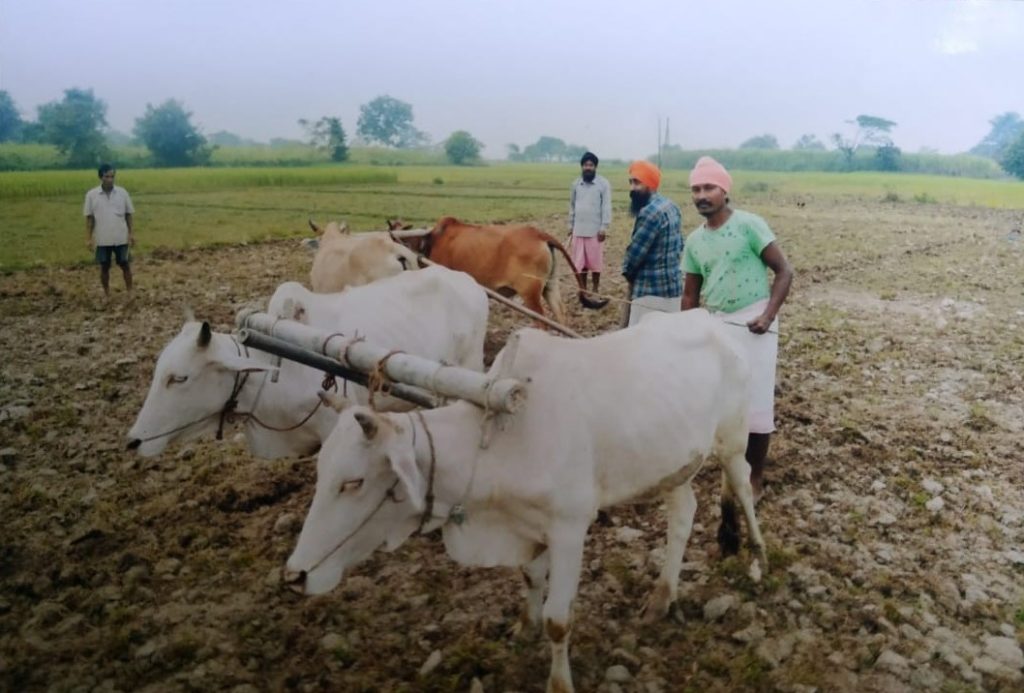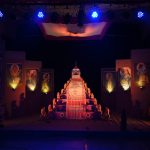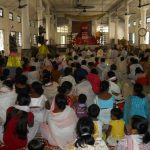The community known as Assamese Sikh is a very silent, dedicated community, who have enriched the socio-cultural life of Assam. Their participation in the societal lives is so intense that all the folk elements of the Assamese society have been preserved by them in an earnest manner, unlike many other communities within the Assamese society who have lost connection with their roots. Growth of creamy layers generally detach any caste or community from the roots. But this has not happened with the Assamese Sikhs even though there is a very small creamy layer in this community too.
The Assamese Sikh are very religious and they follow the religious customs of Sikh religion very punctually and sincerely. But they do all those among themselves. They do not bother much to maintain any serious sustained relationship with the Sikh people elsewhere. But whenever there was any effort from the Sikh people elsewhere, the Assamese Sikh have reciprocrated sincerely. Sikhs of Delhi have extended helping hand in renovation work of some Gurudwaras, which was heartily welcome by the Assamese Sikh. But in language, culture and management pattern, the Assamese Sikh maintain their own style. They do not align with the Sikh people elsewhere in this regard. For example only once the Sikhs in Borkola brought a Granthee from Punjab to run the Gurudwara in Borkola; even that Granthee became full-fledged Assamese before long. For the Assamese Sikhs, the Assamese people are the brethren, not the Sikh people elsewhere. Many members of the Assamese Sikh do not know the Gurmukhi language, a sine qua non for the traditional Sikh. That is one of the differences between Assamese Sikh and the Sikh people elsewhere.
There are even physical differences between the Assamese Sikhs and the Sikh people elsewhere. It has been found in their physiology too. Their blood quality has also become different. A study by Dr P.K. Sarma showed that the Assamese Sikhs have Haemoglobin E (Hb E) with a gene frequency of 0.209, which the Sikh people elsewhere do not have. This is a disorder of the autochthonous people of North East. Internalisation of such physical traits show how much indigenous they have become. (Hadirachakir para Barkolaloi, ed by Nanda Singh Barkola & Kabita Rani Singh, pp. 482-485)
Assamese Sikhs migrated to Assam in different times, some in seventeenth century, some in eighteenth century, some in nineteenth century. They settled in places like Dhubri, Chaparmukh, Borkola, Lanka, Hatipara, Raha, Palasbari, Rampur, Tangla, Gahpur, Helem etc. They assimilated with the mainstream and rather created the mainstream as many other components of the mainstream came even after that. The forefather of the present author came to Assam in fourteenth century from Kannauj. Tribes like Ahom, Mising etc also migrated to Assam. Thus most of us are basically migrants, our time of migration being different. That does not make any one more Assamese or less Assamese as long as one accepts Assam and the Assamese language as own. The Assamese Sikhs are the foremost in this task.
But what is more important is that even the so-called religious distinction also does not actually differentiate the Assamese Sikhs from the the non-Sikh Assamese. It is because the very Sikh religion itself is a derivative of the movement initiated by the greatest Assamese Srimanta Sankaradeva. I have already showed that Guru Nanak imbibed the religious ideology from Srimanta Sankaradeva. They had meetings. This fact is accepted by all Assamese Sikhs. The Sikhism is not different from Eka Sharana Nama Dharma in essence but only in cultural periphernalia. Guru Nanak met Srimanta Sankaradeva sometime during the twelve year long pilgrimage in 1481-1493 and also again in 1505 during his visit to Assam. (See my book Srimanta Sankaradeva : a multi-faceted genius, Purbanchal Prakash, 2015, pp 121-126) Had it not been the case, the Assamese Sikhs would not have behaved the way they did after settling in Assam. There are many settlers in Assam who came before and after them, but maintained complete separate identity from the ‘mainstream’ society, so much so that political struggles took place both for and against the alien activities by these settlers. During such struggles the Assamese Sikhs took side with the ‘mainstream’ Assamese society.
It is because of this identification with the ‘mainstream’ Assamese society that the Assamese Sikhs have never bothered to seek a separate identity for themselves. While most communities in Assam have clamoured for own identity, own council, the Assamese Sikhs have never raised such political demands. It is beyond their wildest imagination to establish themselves as a separate entity. They do not see themselves separately from the ‘mainstream’ Assamese society. If they ever do that, it will be a betrayal to Guru Nanak. They too realise that.
The Union Government of India set up a National Commission for Minorities (NCM) under the National Commission for Minorities Act, 1992. The Union Government then notified five religious communities – Muslims, Christians, Sikhs, Buddhists and Zoroastrians as minority communities. Further Jains were also notified as minority community vide notification dated 27th January 2014. NCM ascribes to the United Nations Declaration of 18 December 1992 that state should protect the existence of the national or ethnic, cultural, religious and linguistic identity of minorities within their respective territories and encourage conditions for the promotion of that identity.
According to this the Assamese Sikhs are also entitled to protection and reservation in jobs within Assam. However that has not yet happened, which is quite surprising. This is a gross lapse on the part of state government, who have in fact dishonoured the recommendations of a statutory commission. Assam Minority Commission has no representatives from Sikh community, although the Sikh population in Assam comprise about 0.5 per cent of the total population. The Assam Minority Commission consists of Abdul Muhib Mazumdar (Chairman), Allen Brooks (Member), Dr Mukti Deb Choudhury (Member) and Parvez Shah, ACS (Secretary cum Administrative Officer). Centre allots sufficient fund to Assam for development of the minorities. However, these funds are not used properly. This was alleged by Dr Ajaib Singh, the then member of the National Commission for Minorities on 23 November 2012 in Guwahati. In India the Sikhs constitute 1.9 % of total population, but the Muslims with 12.4 % share have mostly hogged the minority status. (www.ncm.nic.in/minority_population.pdf). For example, in Assam the State Government made it compulsory for every Police Station to have minimum one Muslim officer. But no such opportunity was offered to the Sikhs, Jains, Buddhists or Christians by the State Government.
As per data supplied by Dr Nanda Singh Borkola, there are currently 212 graduates and 45 post-graduates among the Assamese Sikhs. Half of them however continue to remain unemployed. Personally I would like all types of reservations go. But as long as reservations are there, deserving people must get it. The Assamese Sikhs have been deprived of that constitution-given right, which is another factor of their lagging behind. However it is not that they are less meritorious than others. There are so many professors, authors, civil servants, physicians, engineers and other professionals among the Assamese Sikhs, who earned their place purely on merit.




